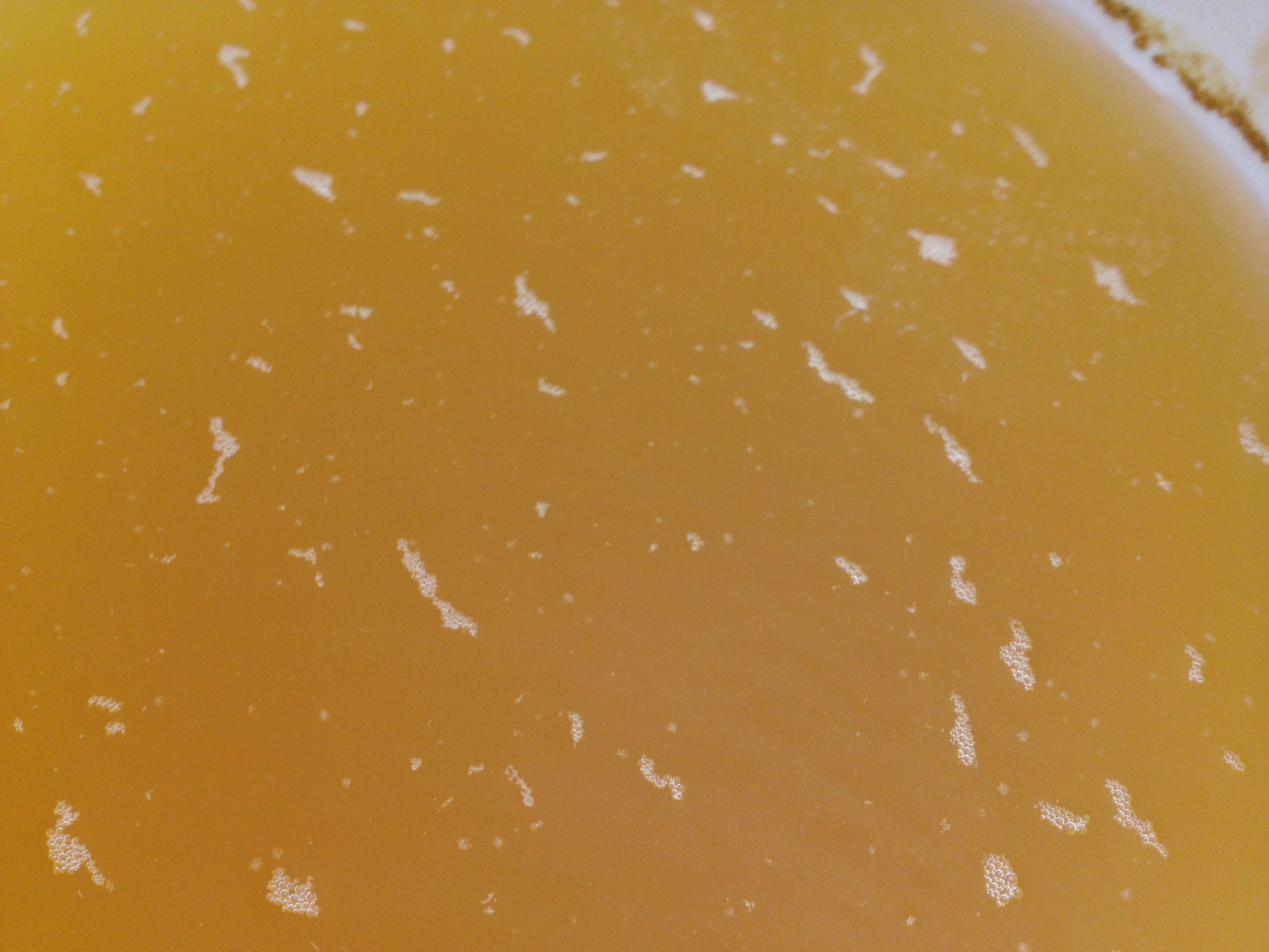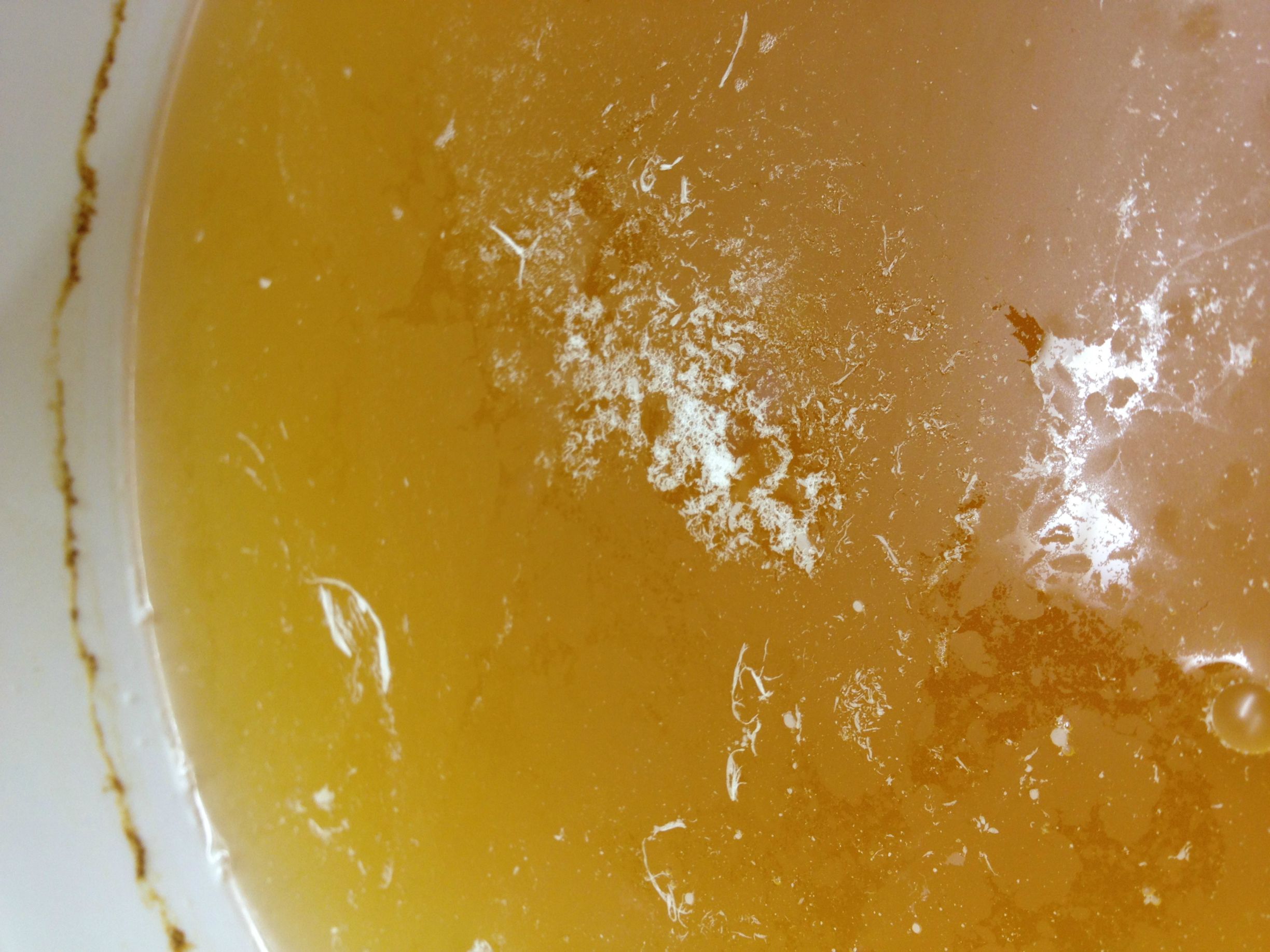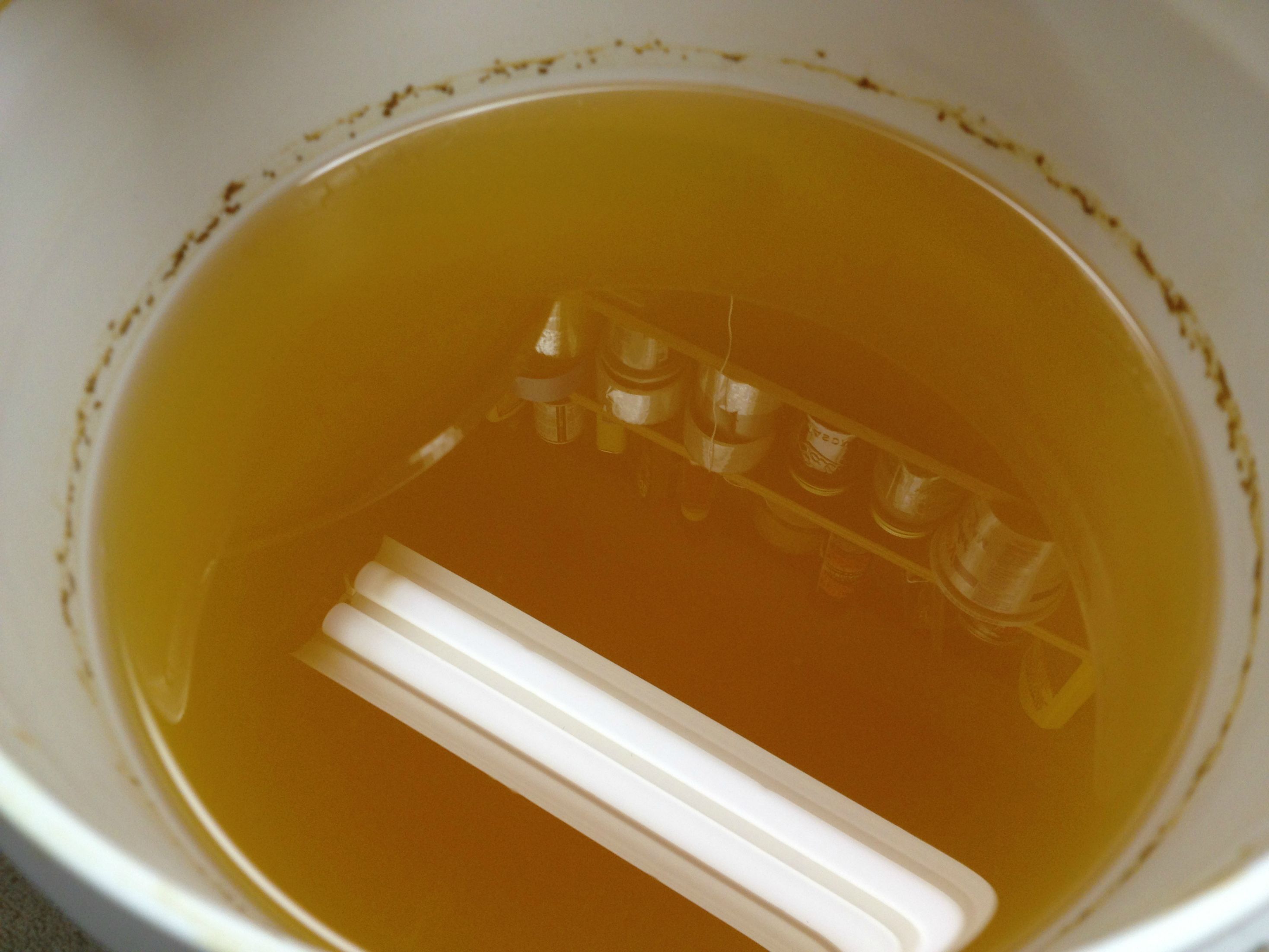jordanelwell
Member
Just opened up my first cider after a month in primary. I used 3 gallons of unpasteurized cider, adding only Nottingham dry yeast. Since I didn't have a fermenter big enough to hold all three gallons, I split the batch into two smaller buckets. I forgot to check the seal, though, and bucket #2 didn't bubble through the airlock, whereas bucket #1 bubbled heartily.
The first two pictures show the surface of bucket #2, and the third image is the surface of bucket #1. What do you think? I was planning on combining the two buckets into a bottler, but I'll at least do them separately and/or toss bucket #2.
EDIT: OG/FG were the same for both buckets. (1.059/1.000)

Bucket #2 just after opening.

Bucket #2 after taking a sample for hydrometer.

Bucket #1 after opening, looks like I would have expected.
The first two pictures show the surface of bucket #2, and the third image is the surface of bucket #1. What do you think? I was planning on combining the two buckets into a bottler, but I'll at least do them separately and/or toss bucket #2.
EDIT: OG/FG were the same for both buckets. (1.059/1.000)

Bucket #2 just after opening.

Bucket #2 after taking a sample for hydrometer.

Bucket #1 after opening, looks like I would have expected.

















































![Craft A Brew - Safale S-04 Dry Yeast - Fermentis - English Ale Dry Yeast - For English and American Ales and Hard Apple Ciders - Ingredients for Home Brewing - Beer Making Supplies - [1 Pack]](https://m.media-amazon.com/images/I/41fVGNh6JfL._SL500_.jpg)









